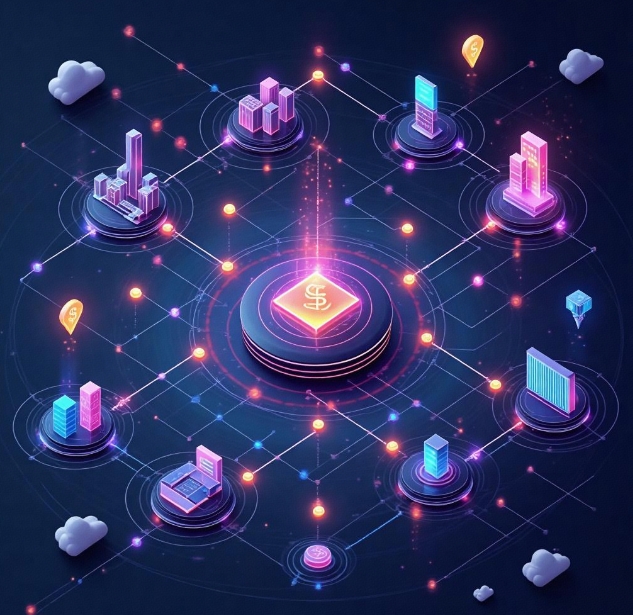Six Key Steps for Businesses to Build a Points Mall System
- latest articles
- 1.DApp Development & Customization: Merging Diverse Market Needs with User Experience 2.Analysis of the Core Technical System in DApp Project Development 3.How to achieve cross-chain interoperability in Web3 projects? 4.How does the tokenization of points reconstruct the e-commerce ecosystem? 5.How to Set and Track Data Metrics for a Points Mall? 6.What is DApp Development? Core Concepts and Technical Analysis 7.Inventory of commonly used Web3 development tools and usage tips 8.Development of a Distribution System Integrated with Social E-commerce 9.Six Key Steps for Businesses to Build a Points Mall System 10.What is DApp Development? A Comprehensive Guide from Concept to Implementation
- Popular Articles
- 1.Future Trends and Technology Predictions for APP Development in 2025 2.Analysis of the DeFi Ecosystem: How Developers Can Participate in Decentralized Finance Innovation 3.From Zero to One: How PI Mall Revolutionizes the Traditional E-commerce Model 4.DAPP Development | Best Practices for Professional Customization and Rapid Launch 5.Recommended by the Web3 developer community: the most noteworthy forums and resources 6.From Cloud Computing to Computing Power Leasing: Building a Flexible and Scalable Computing Resource Platform 7.Shared Bike System APP: The Convenient Choice in the Era of Smart Travel 8.How to Develop a Successful Douyin Mini Program: Technical Architecture and Best Practices 9.How to Create a Successful Dating App: From Needs Analysis to User Experience Design 10.From Design to Development: The Complete Process of Bringing an APP Idea to Life
In the modern business environment, loyalty point malls have become an important tool for more and more enterprises to conduct marketing, maintain customer relationships, and increase user engagement. Through a loyalty point mall system, businesses can incentivize consumers to make more purchases, enhance customer loyalty, and boost brand value. Especially in the e-commerce and retail industries, the use of loyalty point malls is becoming increasingly common. Therefore, how to build an efficient and user-friendly loyalty point mall system has become an important topic.
Building a loyalty point mall system is not a simple task; it involves multiple aspects such as technical development, user experience design, and data analysis. This article will explore in detail the six key steps for enterprises to build a loyalty point mall system, helping businesses better understand how to smoothly implement the construction from planning to execution.
1. Define Goals and Requirements
Before starting to build a loyalty point mall system, enterprises first need to clarify the goals and requirements of the loyalty point mall. This step is crucial because only with clear goals can corresponding planning and design be carried out based on the specific situation of the enterprise.
1.1 Determine Mall Goals
The goals of a loyalty point mall system vary depending on the enterprise and may include:
Increase User Purchase Frequency: Attract customers to make repeated purchases through point incentives.
Enhance Customer Loyalty: Encourage customers to strengthen their brand identification through point rewards.
Data Collection and Analysis: Collect customer consumption behavior data through the loyalty point mall to provide decision-making basis for subsequent marketing promotions.
Enhance User Interaction: Allow users not only to redeem products in the mall but also to participate in more interactive activities, such as quizzes, check-ins, etc., to increase user engagement.
After defining the goals, enterprises need to set specific functional requirements, types of redeemable products, point calculation rules, user levels, etc., for the loyalty point mall based on these goals.
1.2 Analyze User Needs
Different user groups have different needs for loyalty point malls. For example, younger users may focus more on entertainment and interactivity, while mature users may prefer practical product redemptions. Therefore, understanding the characteristics and needs of the target users is crucial for the design of the mall.
2. Choose the Right Technology Platform and Tools
Choosing the appropriate technology platform and tools is the foundation for building a loyalty point mall system. The choice of technology platform directly affects the system's stability, scalability, and security, so it needs to be carefully considered.
2.1 Choice of Development Method
Enterprises can choose to build their own system or purchase a ready-made loyalty point mall solution. Building a system in-house allows for high customization according to the enterprise's specific needs, offering greater flexibility, but it also requires significant investment in manpower and resources, with a longer development cycle. Purchasing a ready-made system allows for quick setup but may have limitations in terms of personalized customization.
2.2 Choice of Technology Stack
If choosing to build a system in-house, the choice of technology stack is crucial. Common technology stacks include:
Frontend Technology: Such as React, Vue.js, etc., to ensure the mall interface is simple and easy to use.
Backend Technology: Such as Java Spring Boot, Node.js, etc., to ensure the system is stable and efficient.
Database Technology: Such as MySQL, MongoDB, etc., used to store point data, user behavior data, etc.
Payment System: Integrate payment channels such as Alipay, WeChat Pay, etc., to facilitate user point redemption and payments.
2.3 Security Considerations
The mall system involves a large amount of user data and transaction data, so security is very important. Enterprises must take measures to prevent issues such as data leaks and point theft. For example, data encryption, two-factor authentication, and other means can be used to protect system security.
3. Design Point Rules and Reward System
The core of a loyalty point mall system is the point rules and reward system. Reasonable point rules can not only incentivize users to participate in activities but also enhance user engagement.
3.1 Ways to Earn Points
The first step in a loyalty point mall is to set the ways to earn points. Enterprises can design multiple ways for users to earn points based on their business needs. Common methods include:
Purchasing Products: Provide corresponding point rewards based on the purchase amount or product category.
Check-in Rewards: Users earn points by logging in and checking in daily, incentivizing them to use the platform continuously.
Participating in Activities: Users can also earn points by participating in platform promotions, completing tasks, etc.
Referral Rewards: Users receive point rewards for referring new users who register and complete a purchase.
3.2 Ways to Redeem Points
The point redemption rules need to be simple and attractive, ensuring that users can get tangible rewards through their points. Common redemption methods include:
Product Redemption: Users can redeem products or services on the platform with points.
Coupon Redemption: Users can use points to redeem coupons of a certain value for their next purchase.
Membership Level Upgrade: Some platforms use a point upgrade mechanism where users can upgrade to a higher membership level after accumulating a certain number of points, enjoying more privileges.
3.3 User Level System
To increase user participation and loyalty, enterprises usually design different user levels. Users upgrade their levels by accumulating points, and the higher the level, the more benefits they enjoy. For example, high-level members can receive a higher percentage of point rebates, exclusive discounts, etc.
4. Optimize User Experience and Interface Design
The user experience of the loyalty point mall directly affects user frequency and satisfaction. Therefore, when building a loyalty point mall system, enterprises must focus on interface design and user experience optimization.
4.1 Interface Design
The interface of the loyalty point mall should be simple, intuitive, and easy to operate, avoiding complex designs that confuse users. In particular, user point information, redemption processes, activity rules, etc., should be clear and straightforward to avoid unnecessary difficulties for users during use.
4.2 Mobile Adaptation
With the popularity of smartphones, more and more users access loyalty point malls through mobile devices. Therefore, enterprises need to ensure that the mall system is well-adapted to mobile devices, allowing users to browse products, check points, and participate in activities anytime, anywhere.
4.3 System Fluidity
The system's response speed directly affects the user experience. The mall should have fast loading and smooth operation capabilities to avoid user loss due to system lag or slow loading.
5. Data Analysis and Operational Optimization
A loyalty point mall is not just a transaction platform; it also provides a large amount of user data. Enterprises need to use this data for effective analysis to optimize mall operations and improve marketing effectiveness.
5.1 Data Collection and Analysis
The loyalty point mall system should be able to collect and analyze user behavior data, such as users' point acquisition and usage, purchase preferences, activity levels, etc. This data provides valuable market insights for enterprises, helping them formulate more precise marketing strategies.
5.2 Optimize Marketing Strategies
Through data analysis, enterprises can discover which point reward methods are most popular, which redemption products are best-sellers, and users' consumption habits, etc. Based on this data, enterprises can continuously adjust their marketing strategies, such as launching limited-time offers, increasing redemption rewards for popular products, etc.
5.3 Increase User Engagement
By continuously optimizing user experience and marketing strategies, enterprises can increase user activity and engagement. Enterprises can set point expiration rules to remind users to use their points before they expire, or regularly launch new activities to incentivize user participation.
6. Continuous Monitoring and Iterative Updates
The loyalty point mall system is not static after completion. To ensure the system operates effectively and continuously, enterprises need to conduct regular monitoring and updates.
6.1 System Monitoring and Optimization
Enterprises need to monitor the loyalty point mall system in real-time, promptly identifying and resolving technical issues or user feedback. At the same time, based on user needs and market changes, continuously optimize system functions and user experience.
6.2 Regular Content and Activity Updates
The products, activities, and other content in the loyalty point mall need to be updated regularly to maintain user interest. By introducing new redemption products, holiday promotions, etc., enterprises can stimulate user participation and maintain the mall's activity.
Conclusion
Building a loyalty point mall system is a systematic project that requires comprehensive consideration of multiple aspects, from goal setting, technology selection, point rule design, user experience optimization, data analysis, to后期的 continuous iteration and updates. Only by striving for excellence in these key steps can enterprises fully leverage the value of the loyalty point mall, enhance customer satisfaction and brand loyalty, and ultimately achieve better market results.
-

How does the tokenization of points reconstruct the e-commerce ecosystem?
With the continuous advancement of internet technology and the gradual prolifera···
-

How to Set and Track Data Metrics for a Points Mall?
With the rapid development of the e-commerce industry, points malls, as a common···
-

Development of a Distribution System Integrated with Social E-commerce
With the rapid development of internet technology, the e-commerce industry has e···

 Blockchain
Blockchain












